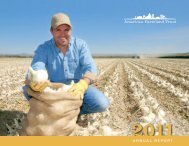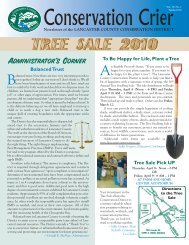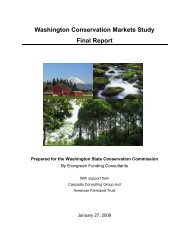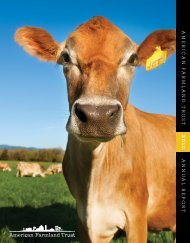Farms for the Future: Massachusetts - American Farmland Trust
Farms for the Future: Massachusetts - American Farmland Trust
Farms for the Future: Massachusetts - American Farmland Trust
Create successful ePaper yourself
Turn your PDF publications into a flip-book with our unique Google optimized e-Paper software.
<strong>Massachusetts</strong>’ Investments in <strong>Farmland</strong> Conservationreduce greenhouse gas emissions.Participating farmers are reimbursed<strong>for</strong> <strong>the</strong> cost of materials,up to $30,000.Since 1999, <strong>the</strong> program hasfunded 267 projects statewide.These projects have rangedfrom <strong>the</strong> installation of animalmanure waste systems to pesticidestorage facilities to fencing tokeep livestock away fromwetlands and water supplies.Conservation practices like<strong>the</strong>se can help farmers reduceexpenses, provide valuable publicbenefits and, in some cases, commandhigher prices <strong>for</strong> products. These practicesalso help farmers comply with federal rules, such asthose that regulate animal feeding operations.Program SpendingMillions$18.0$16.0$14.0$12.0$10.0$8.0$6.0$4.0$2.0$0.0Since 1999, <strong>the</strong> program has awarded 267 grantsto farmers, totaling $2.3 million. Annual programspending has averaged about $270,000, and, over<strong>the</strong> past three years, about 29 farms a year havereceived grants. 39 The 2008 Environmental Bondbill provides $3 million in bond authority <strong>for</strong> <strong>the</strong>program over <strong>the</strong> next five years.$9.0AEEP: Helping <strong>Farms</strong> Make Good NeighborsWater is a critical component of cranberry production. Tocontrol <strong>the</strong> water flow from a bog, cranberry growers oftenuse “flumes,” boards made out of steel, aluminum or concrete.After applying pesticides, growers will hold water in abog <strong>for</strong> a number of days until <strong>the</strong> pesticides become inactiveand can be released without threat of harm. During this time,it is important that <strong>the</strong>re not be seepage through <strong>the</strong> flumes.AEEP funding has helped at least one cranberry grower withdeteriorated flumes. 41 Such assistance is helping cranberrygrowers make good neighbors.Demand <strong>for</strong> Conservation Cost-Share Assistance$15.6Program Demand$3.6 $3.2$5.5FY03 FY04 FY05 FY06 FY07Unfunded Applications to <strong>the</strong> Environmental Quality Incentives ProgramSource: USDA Natural Resources Conservation Service, 2008This program consistently receives two-and-a-halftimes <strong>the</strong> number of requests <strong>for</strong> eligible projectsthan can be funded. In 2008, <strong>the</strong> program receivedrequests <strong>for</strong> approximately $900,000 in cost-shareassistance with only $400,000 available.A particular strength of <strong>the</strong> AEEP program is itsability to complement federal funding <strong>for</strong> environmentalquality practices on farms, thus enabling<strong>the</strong> completion of, <strong>for</strong> example, a costly manuremanagement system that o<strong>the</strong>rwise afarmer could not have af<strong>for</strong>ded.The USDA administers a programsimilar to AEEP known as <strong>the</strong>Environmental Quality IncentivesProgram (EQIP). The program helpsfinance structural or managementpractices that promote environmentalquality and is consistently oversubscribedin <strong>Massachusetts</strong>. From2003 to 2006, <strong>the</strong>re were 1,301applications to <strong>the</strong> program fromfarmers around <strong>the</strong> state—requesting$31.4 million in conservation costshareassistance—that wentunfunded. 40 The unmet demand <strong>for</strong>this program suggests a need <strong>for</strong>additional AEEP funding.<strong>American</strong> <strong>Farmland</strong> <strong>Trust</strong>15


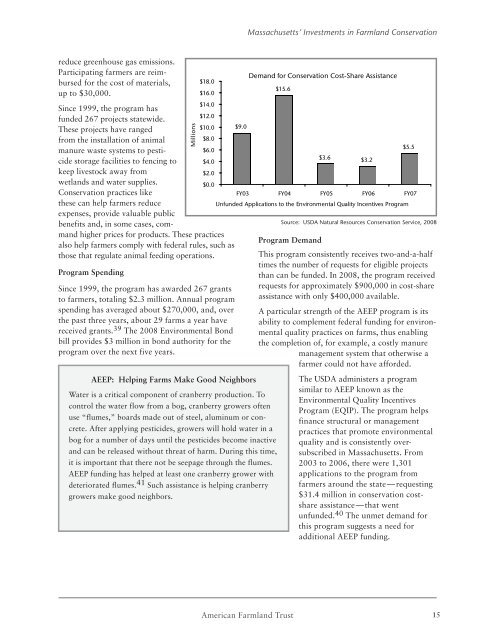
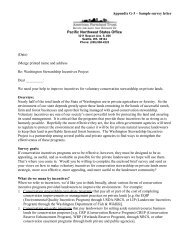

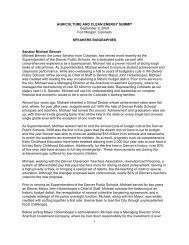
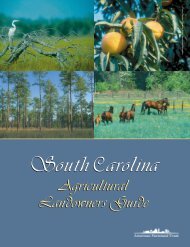
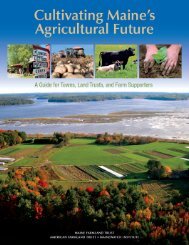
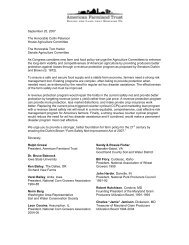
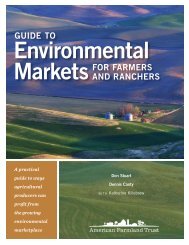
![Farmland by the Numbers [PDF] - American Farmland Trust](https://img.yumpu.com/31549391/1/190x245/farmland-by-the-numbers-pdf-american-farmland-trust.jpg?quality=85)
